As a marketer, you must learn how to develop a landing page. A landing page is a designated page where your visitors land when they click on an ad. It may also be a page that contains a call-to-action button or serves as your website’s homepage.
Regardless of how your audience “lands” on a landing page, it encourages them to convert to a lead or customer. Hence, landing pages are uniquely powerful components of a business’s digital marketing strategy.
Therefore, if you really want to generate leads, referrals, and sales – a killer landing page is the answer. Luckily, IT Verticals has written this perfect guide on how to develop a landing page.
Landing pages are individual web pages meticulously crafted to captivate a particular audience and prompt them to take precise actions. Typically serving as the culmination of a marketing endeavor, these pages draw visitors from sources such as paid advertisements, social media entries, or website material.
Learning how do you create landing page helps you inspire visitors to engage in actions like subscribing, making purchases, or exploring a product demo.
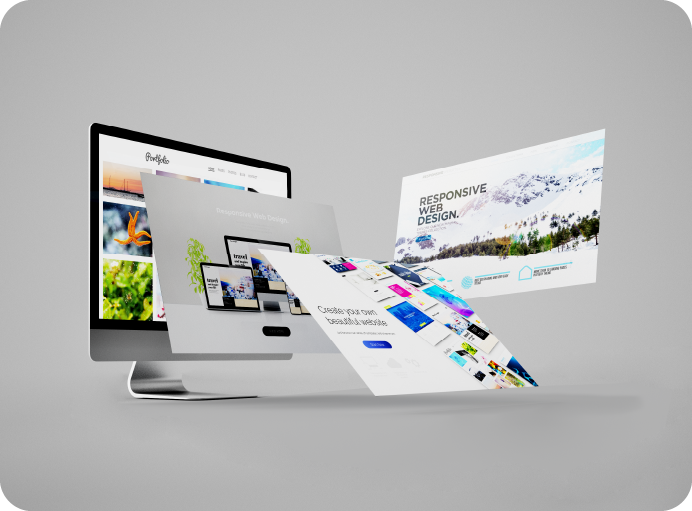

Types of Landing Pages That Convert
While there are several types of landing pages, some are specifically designed to connect and convert visitors into paying customers or subscribers. When learning how to develop a landing page, here are the five most popular types to boost your conversion in 2024.
Lead Capture Landing Page
Modern-day customers are increasingly gaining awareness about data privacy laws, making it tricky to obtain their information for lead generation.
A lead capture landing page is designed to entice visitors into sharing their contact details, often in exchange for valuable content or offers. Its goal is to convert visitors into leads, enabling your business to nurture and build a customer base for future marketing efforts.
Sales Landing Page
A sales capture landing page is a targeted web page aimed at converting potential customers into immediate buyers. Based on the intricacy of your product or service, your sales landing page may serve as an informative resource, highlighting benefits and addressing pain points.
You must master how to build a landing page that offers enticing nudges and stimulates a desire amongst your customers to make a purchase. The purpose of sales landing pages is to maximize sales conversions by delivering a seamless and persuasive buying experience.
Splash Landing Page
A splash landing page is visually engaging and concise, instantly capturing visitors’ attention. It typically showcases a captivating image, brief message, or promotion, and it is often used for special announcements, events, or discounts.
Your splash landing page’s primary goal is to interact and convince your website’s visitors to explore more of your offerings, create an immediate impact, and direct users to the main content or action.
Squeeze Landing Page
A squeeze landing page is a concise and persuasive web page designed to capture visitors’ contact information, typically in exchange for valuable content, offers, or updates. You can use these landing pages to “squeeze” leads from visitors, build an email list for future marketing efforts, and foster ongoing engagement with potential customers.
Referral Landing Pages
A referral landing page becomes a potent tool when running referral incentives, promotions, sales, or discounts. It helps elevate your customer lifetime value and motivates them to extend your reach within their networks.

A simple answer to this question is that a landing page allows you to eliminate any elements that may distract your visitors’ attention. These distractions may include competing links, navigations, alternate options, and more. These eliminations increase the effectiveness of your landing page to capture your visitors’ undivided attention.
Moreover, when it comes to how to develop a landing page, there are instances when it is the best and most effective way to attract and capture leads to drive sales. Let us look at five ways you can implement landing page optimization to boost your lead generation and sales volumes.

When you build a landing page just for your ad, like one for a new product, it can show up higher in Google search results. Google likes it when the page matches well with what people are searching for. So, if your ad is about something specific, like a special deal, a dedicated landing page can attract customers looking for that exact thing.
If you are hosting an event, having a separate landing page just for that can attract more people who are interested in it. Even though you might have event details on your main website, a landing page can draw in those who are specifically interested in that event.



A lead magnet is helpful like a guide or a webinar, that you can get by filling out a form. Even if you just give your name and email, you become a lead. To make your lead magnet stand out, create a special landing page just for it. Focus on the content, the form, and using the right keywords. Lead magnets can be things like webinars where experts answer questions, eBooks, free samples, or helpful guides. You can also make a checklist to help people with a task.


Attract Various Types of Customers
You can make special landing pages just for different kinds of people. The things on the page, like what it looks like, what it says, and what it offers, will affect how those people react to it. Therefore, you must learn how to develop a landing page that attracts customers from certain places, certain groups of people, or those interested in specific prices or quality.

A landing page is like a single sheet with just one thing to think about, which makes it easier to see what works. You can test it a lot with special tools to make sure it’s interesting and easy to use. Things you can test include the words you use, how you say things, pictures or videos you add, and the words people search for. When you make the content personal to the people visiting, like using their names, they’re more likely to do what you want them to, like buying something.
A good landing page should have these five elements (look at the example below to see how they work):
- Catchy headline that grabs attention
- Picture that fits your audience
- Form for signing up, easy to find at the top of the page
- A button that tells people what to do like “Sign Up Now!”
- Words that explain what you’re offering and convince people to sign up
To make a good landing page, you need to know your audience well. Where are they coming from, and what stage are they at in deciding to buy something? You should include enough information to convince them to sign up but not too much that it overwhelms them.


Most people do not read every word of your carefully written text. Instead, they quickly scan through it to find the important parts. Your job is to make those important parts really stand out so visitors do not miss them.
Here’s what you can do:

- Put the most important information at the top of the page so visitors don’t have to scroll to see it.
- Make sure your page passes the “blink test” – meaning visitors should understand the main message in less than five seconds, like the time it takes to blink.
- Use white space wisely to keep visitors interested and focused, helping them understand your message better.
- Write with bullet points and short paragraphs to make your text easy to read.
- Try to arrange the important parts of your text in an F-pattern. Most people scan a page in this pattern online, so it helps guide them to the key points that can make them take action.

The design of your landing page, including the colors you choose, should match your website’s design. You want to build a lasting connection with the people who visit your landing page. This means they should recognize your brand’s colors and style.
When people recognize your brand, they trust you more. And when they trust you, it’s easier to get them to do what you want. Think about using different colors for parts of your page that need to stand out, like your “Sign Up” button.
Contrast is important. If your brand’s colors are mostly green, for example, you might choose a contrasting color like purple to grab users’ attention.


The picture on your landing page is the first thing people notice, and they understand images much faster than words. So, it sets the mood for their whole visit.
But with so many photos to choose from, how do you pick the right one?
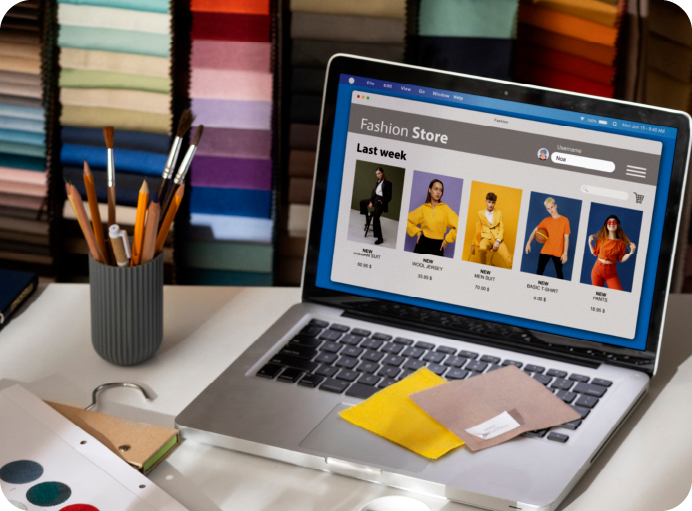
- Ask yourself these questions:
- Who are you trying to reach? What are they like? How old are they? What are they interested in? Your image should connect with your audience.
- Where do you want people to look on your page? People follow where others are looking. If you want them to sign up, use a picture that points to the form.
- Does the image match your message? Everything on your page should have a reason. Since the image is the first thing people see, it should tell them what your page is about.
Always, remember to think about these things when picking images when developing your landing pages.

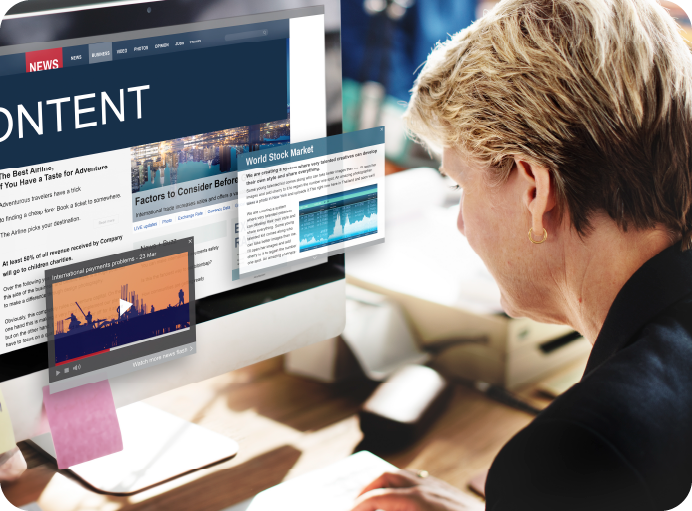
After thorough analysis, we have identified that out of every 10 people who visit a landing page, about seven leave right away. To stop that from happening, visitors need to know why they should stay as soon as they arrive.
The headline is the first thing they see, and it should quickly tell them what my landing page and offer are all about. The same goes for your landing page, so make sure your headline is clear, to the point, and interesting.

Creating a CRO (Conversion Rate Optimization) plan for your landing page helps maximize its effectiveness. It identifies areas for improvement, tests different elements to boost conversions, and enhances user experience. Analyze your data and strategies tailored to your audience to increase conversion rates, generate more leads, and ultimately achieve your marketing goals more efficiently.



A/B testing splits your website visitors into different groups to see which version of your page works better. It’s more efficient to use software for this than to do it manually. The key parts of A/B testing are the original page (champion) and the modified page (challenger).
You should only change one thing at a time to see what makes a difference. You can test various elements of your page, like the headline, image, or call-to-action button color. Start with small changes and work up to bigger ones until you are happy with your conversion rates.

Creating a powerful landing page copy has many benefits for you. It grabs the attention of your visitors and keeps them interested. A compelling copy helps them understand what you are offering and why it matters to them. It persuades them to take action, like signing up or buying something.
A well-written copy builds trust and credibility with your audience, making them more likely to follow through with your call to action. Ultimately, it increases your conversion rates and helps you achieve your marketing goals. So, invest time and effort in crafting a potent landing page copy to reap these rewards


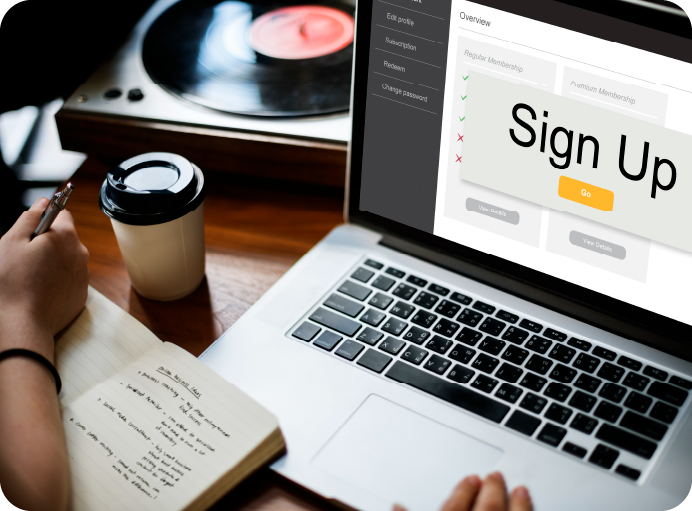
When designing your CTA (Call to Action), a few tips can make it irresistible for visitors to click. Your CTA includes the button and the words on it, and these tips cover both.
- Use a bright, contrasting color.
- Focus on the benefit to your visitor in the CTA words.
- Keep it short — use no more than five words.
- Use action verbs like Get, Download, Click.
- Make the button big enough to stand out.
- Leave some space around the CTA.
- Put the CTA where people look, like on the right or below the words.
- Test different shapes and words to see what works best (A/B Testing).

Choosing an image that shows what you offer on your landing page is important for a few reasons. First, it grabs people’s attention and makes your offer more appealing. Second, it helps visitors quickly understand what you are all about without having to read a lot of text. Third, it adds visual interest and makes your page more engaging.
Finally, it builds trust and credibility by showing that you are passionate about your offer. Therefore, when picking an image for your landing page, make sure it clearly illustrates your offer to make a strong impact on your visitors.


Putting the lead form above the fold on your landing page is essential. When someone opens your page, they should see the form right away without scrolling down. This makes it easy for them to find and fill out, increasing the chances of them taking action.
If the form is buried below the fold, visitors might miss it or get frustrated trying to find it. By having it visible from the start, you make it convenient for people to sign up or provide their information, improving the effectiveness of your landing page in capturing leads.
You must add a clear and standout call-to-action (CTA) to your landing page is crucial for a few reasons. First, it tells visitors exactly what you want them to do, whether it’s signing up, buying, or subscribing. Second, a noticeable CTA grabs attention and encourages action, making it more likely that people will click on it.
Last but not least, it creates a sense of urgency or importance, prompting immediate action. Without a clear CTA, visitors may not know what step to take next, leading to missed opportunities. So, make sure your CTA stands out and clearly tells visitors what action to take, boosting conversions on your landing page.

When you make your landing page, make sure you are giving visitors something they’ll find helpful and interesting. Think about what they want or need, and offer something that solves their problem or meets their interests.
It could be a free guide, a discount on your product, or a webinar where they can learn something new. By providing something valuable, you are more likely to grab their attention and make them want to stick around or take action on your page. Therefore, you must focus on offering something that is truly useful and relevant to your visitors.

When it comes to your lead form, simplicity is key. Ask for only the most important details to avoid overwhelming visitors. Gather essential information, such as their name and email address. Requesting too much can make people hesitant to fill out the form, leading to fewer conversions.
You should keep it simple and make it easier for visitors to complete the form, increasing the likelihood of them taking action. So, focus on collecting the information you really need to follow up effectively and leave out anything unnecessary.


When developing your landing page, it is important to keep distractions to a minimum. Remove any navigation menus to help visitors stay focused on your main offer. By doing this, you prevent them from getting sidetracked or clicking away from the page too soon.
Without extra links to other pages, visitors are more likely to pay attention to what you present and take the desired action. Therefore, simplify your landing page by removing navigation menus, allowing visitors to concentrate on your offer without any distractions.

It’s crucial to make sure your landing page looks great and works smoothly on every device, whether it’s a smartphone, tablet, or computer. A responsive design automatically adjusts the layout and content to fit different screen sizes, ensuring a seamless experience for all users.
This means that no matter how someone accesses your page, they will have a consistent and enjoyable experience. A responsive design makes it easier for visitors to engage with your content, increasing the chances of them taking action on your landing page. Therefore, it is best to prioritize creating a responsive design to cater to all device users effectively.

When you are creating your landing page, be sure to include keywords that are relevant to your content and audience. These keywords should be used in your page’s content as well as in its meta tags. This way, you improve the chances of your landing page appearing in search engine results when people are looking for information or products related to your offering.
This increases the likelihood of attracting qualified leads who are genuinely interested in what you have to offer. So, make sure to use relevant keywords strategically throughout your landing page to enhance its visibility and attract the right audience.
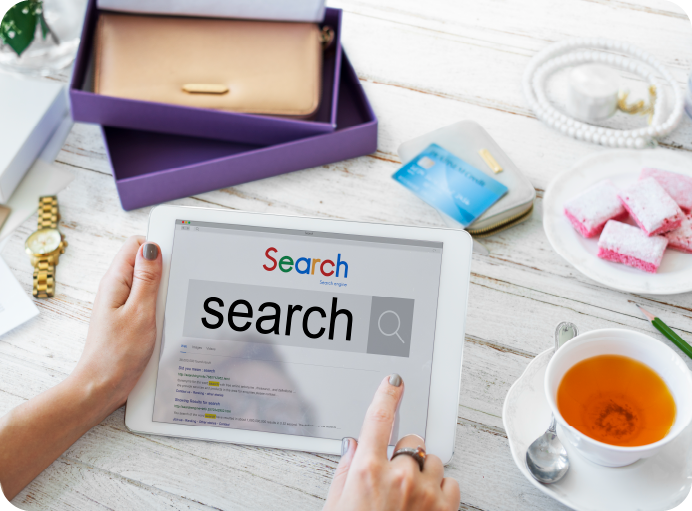


Once visitors complete an action on your landing page, such as filling out a form, it is important to redirect them to a thank you page. This gesture shows appreciation for their engagement and helps nurture the relationship further.
On the thank you page, you can express gratitude, provide additional information, or offer exclusive deals to keep them engaged. This will continue to build rapport with your audience and increase the likelihood of them returning or taking further action. You must always redirect visitors to a thank you page after they have completed an action to maintain a positive relationship and encourage continued engagement.

Identifying your goals when developing a landing page is crucial for your success. It helps you clarify what you want to achieve, whether it’s generating leads, increasing sales, or promoting a specific product or service.
You must set clear goals and tailor your landing page content and design to meet those objectives effectively.
Additionally, having defined goals allows you to track and measure your performance accurately, enabling you to identify areas for improvement and optimize your landing page for better results. Ultimately, understanding your goals ensures that your landing page aligns with your broader marketing strategy and maximizes your chances of success.



Selecting a template saves time and effort by providing a pre-designed layout that you can customize to suit your needs. Templates also ensure consistency in design and branding, enhancing your professionalism and credibility.
Additionally, they offer flexibility, allowing you to experiment with different styles and elements to find what works best for your audience. With a template, you can quickly create a visually appealing and functional landing page without the need for advanced design skills, enabling you to focus on achieving your marketing goals effectively.

Writing engaging copy when developing a landing page captures the attention of your visitors and keeps them interested in your offer. Engaging copy helps convey your message clearly and persuasively, making it easier for visitors to understand the value of your product or service.
You must write compelling headlines and persuasive content. You can motivate visitors to take action, such as signing up or making a purchase. Additionally, engaging copy builds trust and credibility with your audience, ultimately increasing the likelihood of them converting into leads or customers. Therefore, you must invest time in writing captivating copy to maximize the effectiveness of your landing page.



Never underestimate the power of a compelling call-to-action (CTA) when developing a landing page offers several benefits for you. A compelling CTA prompts visitors to take action, such as signing up for a newsletter or making a purchase, increasing conversion rates.
It provides clear direction to visitors, guiding them towards the desired outcome and reducing confusion. Additionally, a well-crafted CTA instills a sense of urgency or importance, encouraging immediate action.
When you incorporate a compelling CTA with persuasive language and attention-grabbing design, you can effectively drive visitor engagement and achieve your marketing goals. Therefore, make sure to focus on crafting a strong CTA to maximize the effectiveness of your landing page.

Visuals, such as images, videos, and graphics, help capture visitors’ attention and make your page more appealing. They aid in conveying information quickly and effectively, enhancing understanding and engagement.
The images and videos you use on your landing page also evoke emotions and create a memorable experience, making your offer more compelling. Additionally, visual content showcases products or services in action, demonstrating their value to visitors.
When you incorporate visual elements strategically, you improve the overall user experience and increase the likelihood of visitors taking action on your landing page. So, prioritize using visual content to enhance the effectiveness of your page.



Social proof builds trust and credibility with your visitors by showcasing real-life experiences and testimonials from satisfied customers. Social proof reassures visitors that others have had positive interactions with your product or service, making them more likely to trust your brand and take action.
Additionally, social proof for your brand or company creates a sense of community and belonging, fostering a positive perception of your brand. Therefore, you must incorporate social proof elements, such as customer reviews, ratings, and endorsements. This will enhance the persuasiveness of your landing page, increase conversions, and boost its effectiveness.

Adding your branding elements helps reinforce your brand identity and creates a cohesive experience for visitors, increasing brand recognition and trust. You must incorporate logos, colors, and fonts consistent with your brand establishes familiarity and credibility, making visitors feel more comfortable engaging with your page.
Your branding elements also differentiate your landing page from competitors and reinforce your unique selling proposition, making your offer more memorable. This allows you to communicate your brand message and build stronger connections with your audience, ultimately driving better results for your business.


Adding tracking allows you to gather valuable data about visitor behavior and interactions, helping you understand what’s working and what needs improvement. You can track metrics like page views, bounce rates, and conversion rates, you can identify areas for optimization and make informed decisions to enhance performance.
Tracking also provides insights into the effectiveness of your marketing efforts and helps measure the return on investment (ROI) of your campaigns. Additionally, tracking enables you to monitor the success of your landing page over time and adjust strategies accordingly, leading to better outcomes and increased success.

Improve the visibility of your page in search engine results with optimized SEO settings. This will make it easier for potential visitors to find you online. You must learn to optimize for relevant keywords and meta tags, and you increase your chances of ranking higher in search engine rankings, driving more organic traffic to your page.
SEO settings also enhance the overall user experience by ensuring your page is easily accessible and user-friendly. Additionally, this will empower you to establish your authority and credibility in your industry, ultimately leading to greater brand awareness and higher conversion rates.

Review your page before making it live, ensuring everything looks and functions as intended. This helps you identify any errors or issues and make necessary adjustments before presenting it to visitors. Publishing your landing page makes it accessible to your audience, enabling them to engage with your offer and take desired actions.
Furthermore, publishing your page marks the completion of your efforts, allowing you to begin driving traffic and generating leads. Overall, previewing and publishing your landing page are essential steps in launching a successful marketing campaign.



